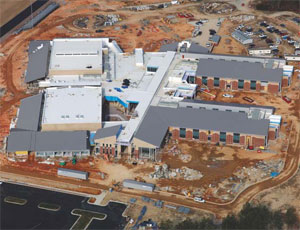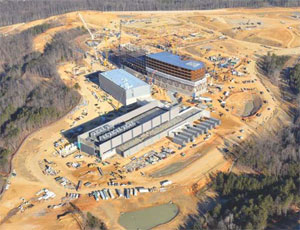...and have not done heavy construction work starting to bid projects at prices that are of concern,” she says. “You want contractors to do the job well –that’s what public deserves – and to make money so their businesses can survive.”
AGC’s Tobin says the pressures also force large companies to bid for smaller work, and sometimes for small companies to up-bid to bigger projects because of their lower cost structures. “So then you’re seeing 20, 30 bidders on some jobs,” he adds.
Diversification doesn’t just mean switching sectors – it can also mean changing roles. Richardson says she sees some contractors seeking work as subcontractors to stay busy.
And sometimes the way to diversify is to find partner firms with specialties that are complementary, says KBE’s Kolakowski. “You have to be willing to step out of the box and be creative,” he adds. “We have had various kinds of conversations about ways to be engaged in different projects. The same old same old doesn’t cut it anymore.”
The biggest diversification move is to acquire another firm, and Coletti says he expects a wave of such consolidation to gobble up smaller contractors. The end result may be more large firms that play in both the building and civil markets.

JEFF ZOGG

BRIAN TOBIN
In Structure Tone’s case, it built its foundation on the corporate interiors market, but has been increasing its share of new construction not only for offices but also mission critical data centers and health care. Adding L.F. Driscoll last year vastly expands its ability to win health sector work, Mullen says.
Skill Building Contractors are also tasked with deciding what to do with more free time – the unfortunate bonus of market slumps. Many are filling downtime by training employees.
It’s not an across-the-board phenomenon – Zogg says his safety courses are well-attended, but management skills classes have taken a hit. “It’s a good opportunity to train staff for the future, but on the other hand, it’s an expense,” he says.
One firm recently pulled several employees from an AGC class, and when Zogg called about it, the contractor told him it was an effort to save money. The contractor eventually sent a few employees.
Still, many firms are making the most of the situation. Tobin says AGC’s OSHA 30 classes have been getting 15% to 20% higher attendance.
At Structure Tone, training takes on various flavors, from internal to third-party instructors. “Now is a good time to push that further,” Mullen says.
Structure Tone’s training programs cover safety, business ethics, communication skills, LEED certification, and American Society for Healthcare Engineering certification. Another prime focus is training for building information..


Post a comment to this article
Report Abusive Comment